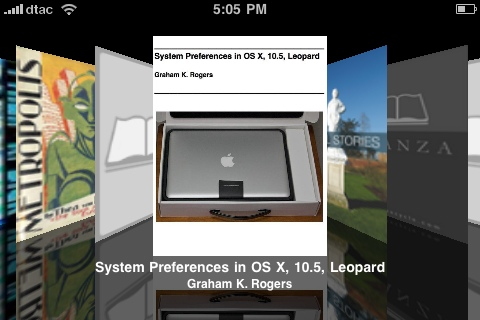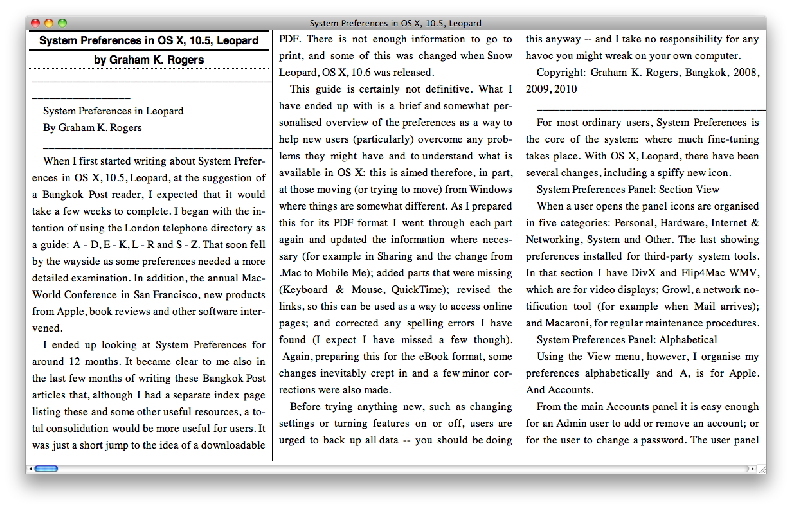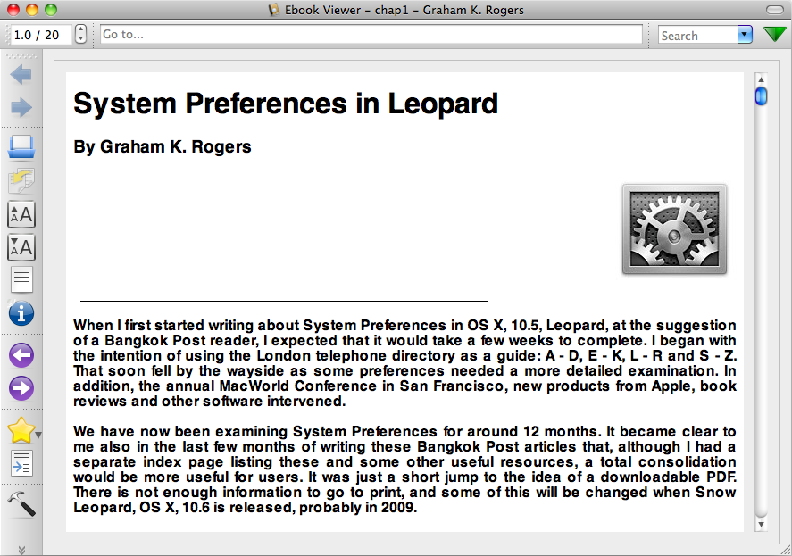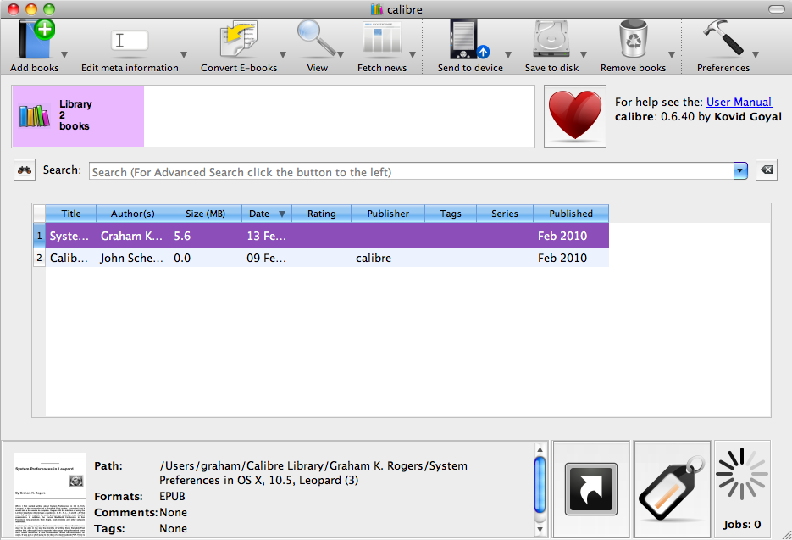
Some never listen properly to Apple's announcements, preferring to make cheap points. Several criticisms of Apple's new online book store that commented on probable copy protection, failed to mention that current book readers (like Amazon and Sony) do this, nor that Apple is embracing the ePub format: an open source file type for publishing.
On the iPhone, I use Amazon's Kindle App and the Stanza reader, which I downloaded when the App Store first appeared here. As the iPhone supports the .EPUB format, I examined some software that would help me make my own examples. If, as an ordinary user, I can do it, then others can, perhaps providing teaching materials, textbooks and manuals at little cost for consumers to use on their mobile devices: highlighting content and not packaging.
None of the software I have will convert files to this eBook format: Apple should add this to Pages and Text Edit. Instead I looked at Open Source software, focussing on three applications: Sigil, Stanza Desktop and Calibre.
The Sigil interface reminded me of an early version of Netscape. I found it easiest to copy the file (PDF or HTML), then Paste into Sigil. What appears in the working panel is unformatted text only. Headings and other limited effects are added and each image needs to be imported. The process needs some organisation before starting. Click and drag of images is not possible.
One advantage (showing its Open Source roots) is the option of a split window to display coding. Here, a URL may be added: not in the main window. I did find it was easy to make mistakes and the "Back" command was not 100% effective, so saving before playing about with code is essential: we can always go back to the last copy.
The default file format is .SGF (Star Office format with Graphics). This did not open in NeoOffice or Open Office, nor could I save in that format from these applications. In Sigil the file can also be saved in the EPUB format then used in readers.
The eBook I made was based on a series I wrote for Database on System Preferences in OS X, 10.5: an update for 10.6 is scheduled for summer. It gave me source of several pages to test in HTML, PDF and .TXT formats. The result is available online as a .ZIP file.
There are several readers for computers of all platforms, but the iPhone was the file's intended destination. I tried two applications for this. Stanza's desktop software will read a file, but will not display included images. It is also easy to import text directly and use that. With the Stanza app active on the iPhone, a link is made and the file downloaded. Although images are not displayed in the desktop version, these are included in file transfers.

Calibre is listed on the Stanza website and has more features than Stanza. As well as the eBook, Calibre can handle several other file types, including news feeds and should convert them. Like the other software here, a panel allows adding of metadata, including title and author name. It also has several features over and above the basic reader. I found that Calibre has some idiosyncrasies, like Command + H for "Find and Replace" (herausfinden?): this command is more often used for "Hide".

With Calibre I was able to add data in .EPUB format, but not all file types, (e.g .HTML) worked for me. [Testing with Thai characters was not successful.] As this is in its early stages (version 0.6.40) and was updated while I was trying it out, this should improve. Adding files is not a fast process. A sample PDF file was imported easily and then converted to EPUB in a few seconds. There are 11 conversion formats, including .LIT (Microsoft readers) and .MOBI which is similar to the Kindle format (which adds DRM as well).

Once converted, or imported to the Library, the transfer to a device is a little more complex than with Stanza. A user enters a password and activates a server to connect. Once done, it is simple to download to Stanza on the iPhone.
Where Calibre scores, despite its unfinished feel, is the range of features the user has, while Stanza is quick, easy and light, and Sigil allows the user some flexibility with setting up input.
There is another scenario that may be attractive to those with publications: the standalone app. In the first days of the App Store, many were surprised to find the top download was Trollope's, Barchester Towers. The eBook is now even more a feature. This, however, needs Developer registration and familiarity with the SDK. Some developers will provide the service to create an app from user input. I am looking at some of these. When I have more information, I will pass this on. What better way to advertise the modernity of your corporation or university than your own eBook or eBook app?
[Note: A local developer I contacted on the question of the eBook app did not get back to me. One developer who advertised this service is not actively marketing this service, but may go for individual books on an ad hoc basis. The charge is variable, starting at $50 for 50 pages, with the pages measured by the developer using PDF as starting point. Other developers are quoting prices that are far higher.]
|







